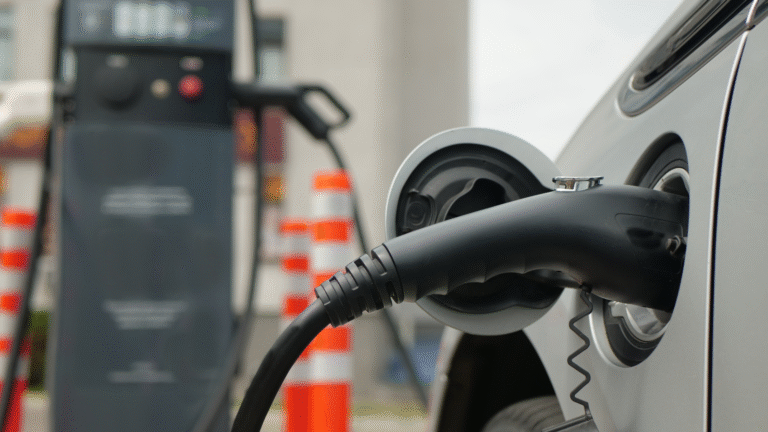Installing public EV chargers can attract customers, extend services and generate a new revenue stream — but the decision involves more than buying hardware. Power connection, user experience, maintenance, payments, liability and local planning all matter. This practical guide gives businesses the key commercial, technical and operational considerations to deploy public chargers that deliver value and avoid common pitfalls.
Table of Contents
- Why businesses install public chargers (benefits and use-cases)
- Site selection: visibility, safety and grid access
- Power, hardware and installation options (technical checklist)
- Payment, software and user experience considerations
- Operations: maintenance, uptime and warranties
- Commercial models: ownership, revenue share and grants
- FAQs
1. Why businesses install public chargers (benefits and use-cases)
- Drive foot traffic: charging customers will spend time and money in your venue.
- Differentiate the business: charging is a modern amenity that appeals to sustainability-minded customers.
- New revenue channel: direct charging fees or membership can offset energy and install costs.
- Corporate fleet support: chargers can serve both public users and your own vehicles in mixed-use operations.
Clear commercial objectives shape the installation choices you’ll make.
2. Site selection: visibility, safety and grid access
- High visibility and easy access increase utilisation. Avoid placing chargers in awkward corners or behind delivery zones.
- Security and lighting are crucial for night-time use and safety.
- Proximity to switchgear and capacity: short cabling runs reduce installation cost. Early network engagement reveals upgrade timelines and potential costs.
- Amenity co-location: placing chargers near cafes, bathrooms and seating turns charging time into customer retention time.
A commercially viable site balances convenience, safety and grid realities.
3. Power, hardware and installation options (technical checklist)
- Decide charger power: slow (AC), medium (50 kW DC) or fast (150–350 kW) depends on customer dwell time and grid access.
- Consider battery buffering to reduce demand charges and avoid expensive network upgrades.
- Future-proof wiring and ducting for additional chargers and higher power units.
- Choose robust hardware with proven uptime and local support; avoid cheap, poorly supported units.
- Ensure proper signage and markings for reserved charging bays and ADA compliance.
Technical choices are a balance between user needs, power availability and capital budget.
4. Payment, software and user experience considerations
- Operator software should provide easy authentication (RFID, app or tap), clear pricing and reliable session history.
- Roaming and billing: adopting open-roaming or clearing-house options expands the potential user base but requires integration.
- Clear pricing avoids disputes — show per-kWh, session and idle fees on-screen.
- Customer support: provide a local help contact and fast response SLAs for faults.
A great user experience drives repeat visits and positive word-of-mouth.
5. Operations: maintenance, uptime and warranties
- Service contracts: choose vendors offering rapid field support and availability commitments.
- Spare parts and local technicians: ensure replacement parts don’t need long import lead times.
- Monitoring and proactive alerts: real-time telemetry allows fast identification and resolution of faults.
- Insurance and liability: check commercial policies for public charger liabilities and ensure signage clarifies user responsibilities.
Operational excellence keeps the chargers useful and revenue-generating.
6. Commercial models: ownership, revenue share and grants
- Ownership models: own-and-operate vs. third-party operator. Own gives control but requires capex; operators remove capex but reduce long-term margin.
- Revenue-sharing arrangements can align incentives; negotiate transparent terms for uptime and payment clearing.
- Grants and incentives: explore state and local programs for site co-funding or installation rebates. Include grant timelines in project planning.
Pick the model that matches your capital appetite and operational capacity.
FAQs
Q: What charger power should a retail business install?
A: For cafes and shops where dwell time is 30–90 minutes, medium DC (50–150 kW) or multiple AC wallboxes are practical. For motorway service stops, install higher-power DC.
Q: How much does a public charger cost to install?
A: Costs vary widely due to power connection, civil works and hardware. Early network quotes and site surveys are essential to forecast accurately.
Q: Who handles payment disputes and refunds?
A: Your operator agreement should specify customer support responsibilities and refund processes. Clear on-screen pricing reduces disputes.
Conclusion
Public chargers can be a strong asset for businesses — attracting customers, creating new revenue and demonstrating sustainability leadership. Success depends on choosing the right site, matching charger power to dwell time, delivering a smooth payment experience, and ensuring robust operations and support. With thoughtful planning and the right commercial partner, chargers become a durable competitive advantage rather than an administrative burden.
Meta description: Businesses can profit from public chargers but must plan site selection, power, payments and operations carefully. Learn practical steps for a successful commercial charger deployment.
